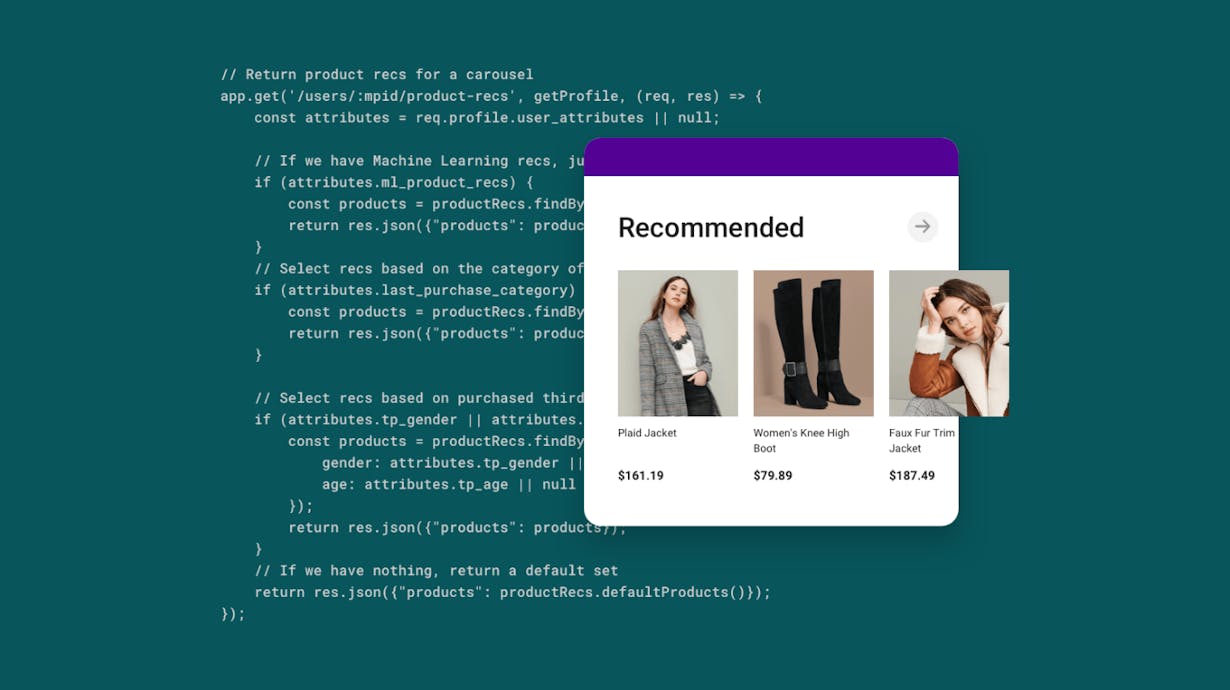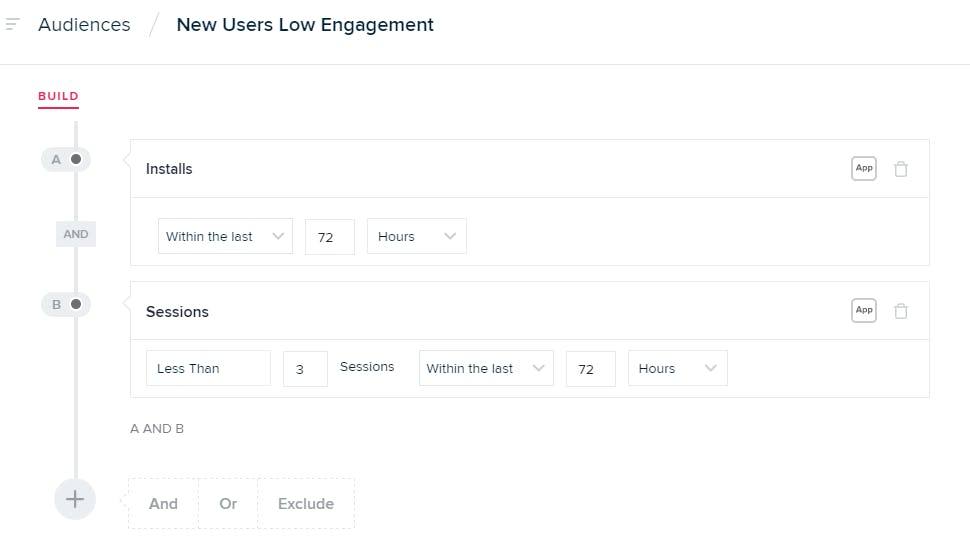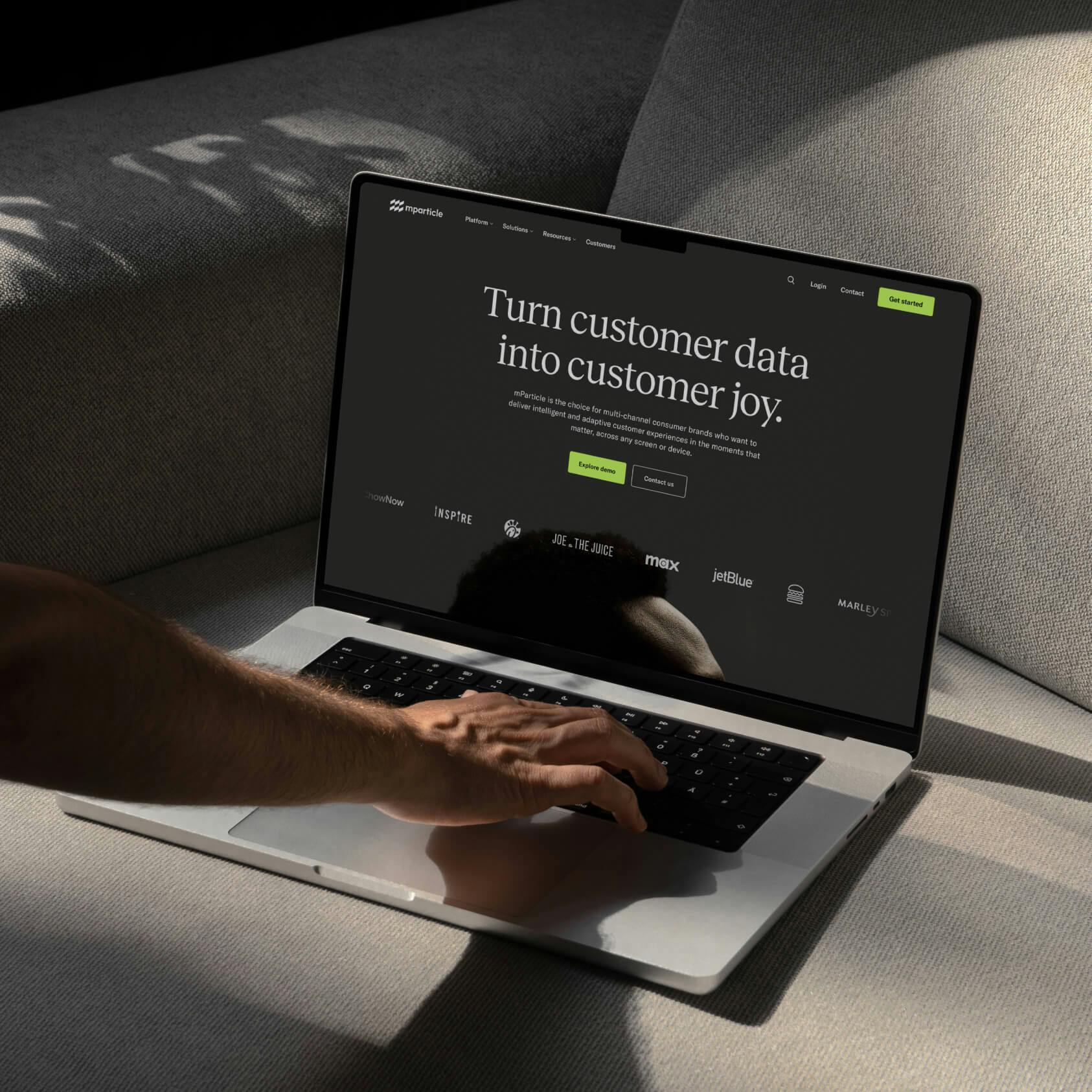How to support your behavioral marketing strategy with a Customer Data Platform
Behavioral marketing has become a core competency for growth teams today. Shifts in privacy legislation and customer preferences, however, have changed the way in which teams must design contextual experiences. Learn more about how you can use a Customer Data Platform to support your behavioral marketing strategy.

Behavioral marketing is not new. In fact, it’s common enough that today’s customers expect experiences that are tailored to their interests. Changes in data legislation, device tracking, and vendor capabilities, however, have changed the way in which growth teams must focus their behavioral marketing initiatives.
Many of the personalization strategies of the 2015-2020 period were based on cookie-based data and acquired 3rd-party data sets. While these methods enabled targeting of anonymous users at scale, updates of tracking regulations, as well as consumers’ general repugnance of being advertised to directly by brands they’ve never heard of, have called the future of these strategies into question.
Today, data-driven personalization efforts must extend beyond top-of-funnel ad targeting to include contextual customer experiences throughout the entire customer lifecycle, delivered across channels. To successfully deliver these contextual experiences to their customers, growth marketers and product managers need to be able to access 1st-party customer data and activate it in real time.
What is behavioral marketing?
As defined by Hubspot, behavioral marketing is the method by which companies target audiences based on their behavior, interests, intentions, geolocation, and other metrics using web analytics, cookies, search history, and other insights. By finely segmenting audiences based on specific behaviors or definitive user profiles, organizations can provide truly relevant content and offers rather than sending a general message to all audiences.
Successful behavioral marketing depends on access to data. While anonymous acquisition targeting initiatives are powered by large third-party data sets, delivering relevant experiences to your existing customers requires a rich, clean first-party data set.
Furthermore, the data in use must be easily available to business users, tied to unified user profiles, and easy to take action on. If you have to submit a request to your engineering or analytics team every time you need to build an audience segment, your behavioral marketing initiatives are not going to scale.
In order to make sure you can execute your behavioral marketing over a long period of time, it’s critical to ensure that you have the right data infrastructure in place.
How can a Customer Data Platform support your behavioral marketing strategy?
A Customer Data Platform is a centralized data infrastructure that helps teams across the organization aggregate and make sense of their customer data.
There are five key functions of a CDP:
- Data collection: The ability to ingest first-party, individual-level customer data from multiple sources via packaged API connections and SDKs, and store that data in a usable format
- Data governance: The ability to granularly enforce which events gets passed onto each system, and process data subject requests - access, portability, erasure
- Data quality protection and profile unification: The ability to monitor data accuracy, consistency, deduplication, and structure, and to unify events and attributes to persistent profiles at the individual-level as data is collected
- Segmentation: An interface that enables business users to build and manage audience segments
- Activation: The ability to send audience segments and forward events to external tools and systems through pre-built integrations, as well as to orchestrate contextual marketing experiences across channels
By ingesting data from across channels into one system, making it easy for business teams to access that data, use it to build audience segments, and activate it across their favorite downstream tools, CDPs have become the critical piece of growth infrastructure that make it possible to deliver behavioral marketing initiatives at scale.
Let’s walk through a few specific personalization initiatives that can be powered with a CDP.
Audience segmentation
Customer Data Platforms collect data from across sources, such as client-side devices, server-side databases, and third-party vendor cloud feeds, and tie it to unified customer profiles. By making these holistic profiles available for segmentation in an accessible UI, Customer Data Platforms provide growth teams with the opportunity to build dynamic customer segments based on real-time, cross-channel data. Furthermore, Audiences built within your CDP can be connected to multiple downstream systems. This allows you to leverage a single Audience for multiple behavioral marketing initiatives, increasing efficiency.

Learn more about how you can build Audiences, connect them to downstream systems, set up A/B audience tests, and more in mParticle here.
In-app personalization
Segmentation is a critical part of behavioral marketing, as it supports personalized email, push messaging, advertising and more. But what if you could tailor experiences not just for a group of customers, but for a specific customer?
Customer Data Platforms allow you to take your behavioral marketing a step further by making it possible to activate the data stored on a customer profile programmatically.
mParticle’s Profile API, for example, makes it possible to leverage the omnichannel customer profiles in mParticle to drive one-to-one personalization anywhere you can send an HTTPS request. You’re able build always-on behavioral marketing workflows, personalizing the in-app and website experience in real time.
For more, here's a video overview of Profile API:
Real-time targeting suppression
For your behavioral marketing efforts to be successful, they need to be personalized to your customers’ most current interests and preferences. That means that whenever a customer takes an action, such as completing a purchase, they shouldn’t continue to receive marketing communications that prompt them to make that purchase.
Customer Data Platforms enable you to design a round-trip data pipeline in which every data point produced is made available across systems in real time. For example, if a customer that is part of your reactivation audience segment makes a purchase on your website, the purchase event created will be collected into your Customer Data Platform. As the purchase event is tied to that customer's profile, they will qualify out of your reactivation audience segment, ensuring that they don’t continue to receive reactivation messaging.
For an example of real-time targeting suppression in action, you can check out how eCommerce brand GOAT used mParticle to power audience suppression on Facebook here.



